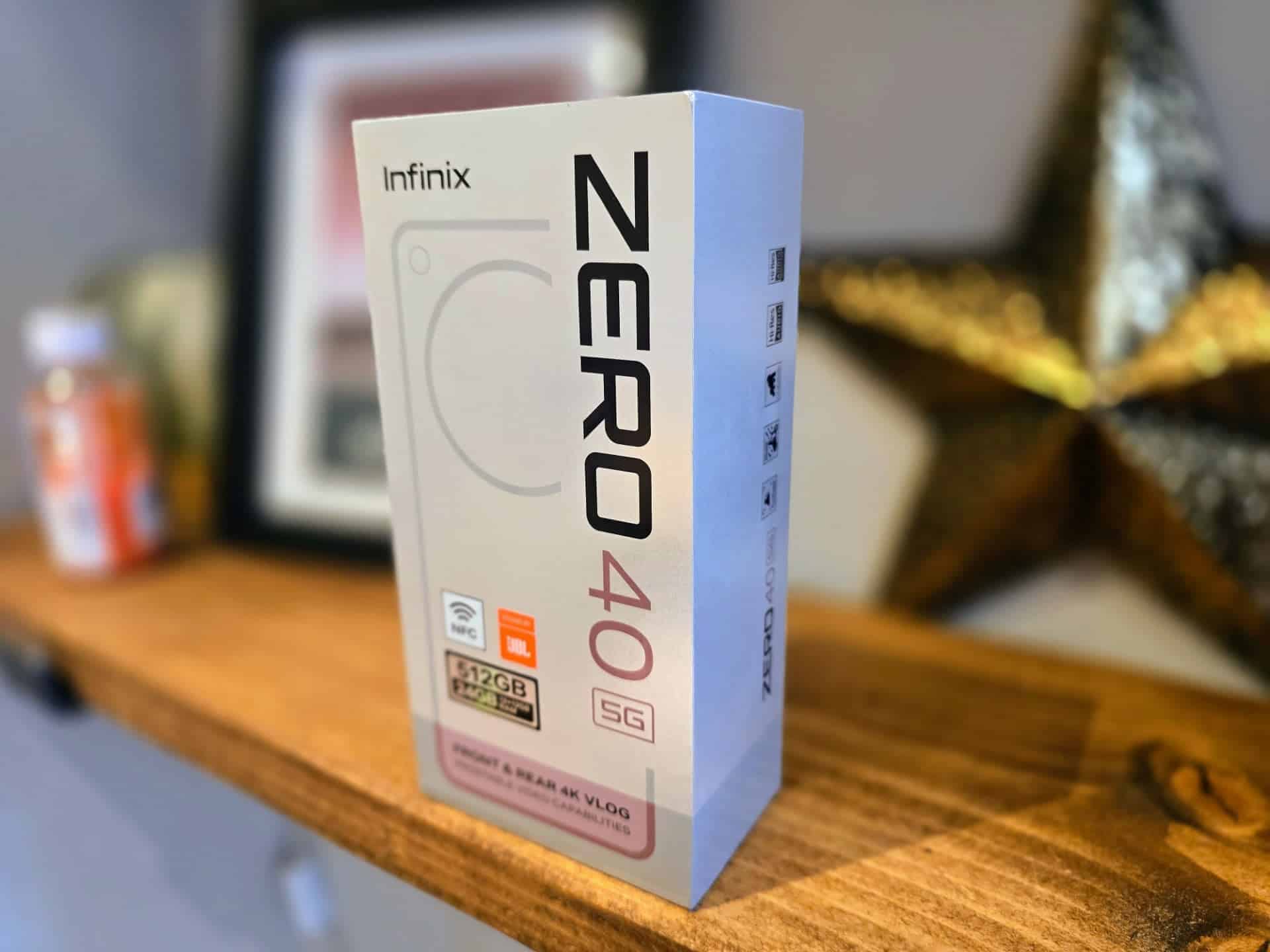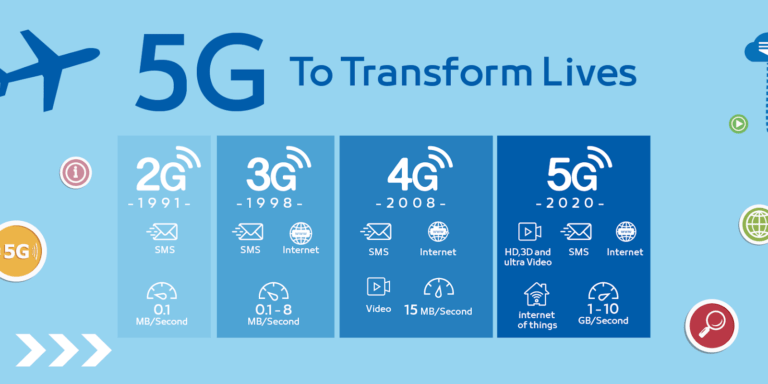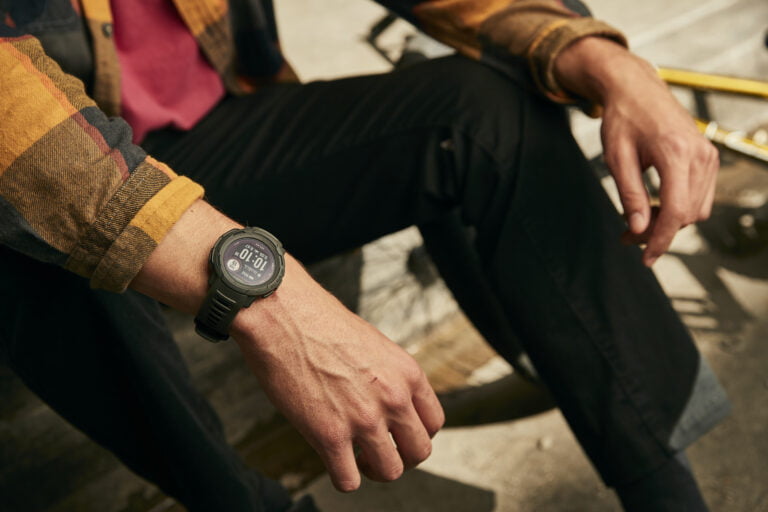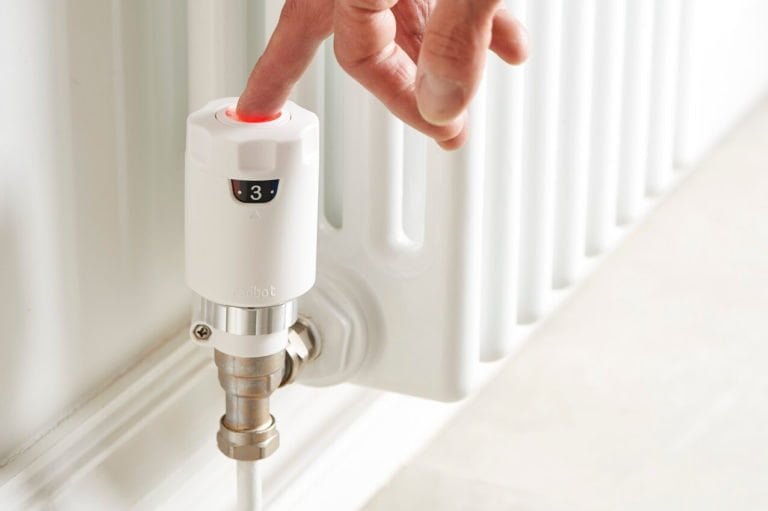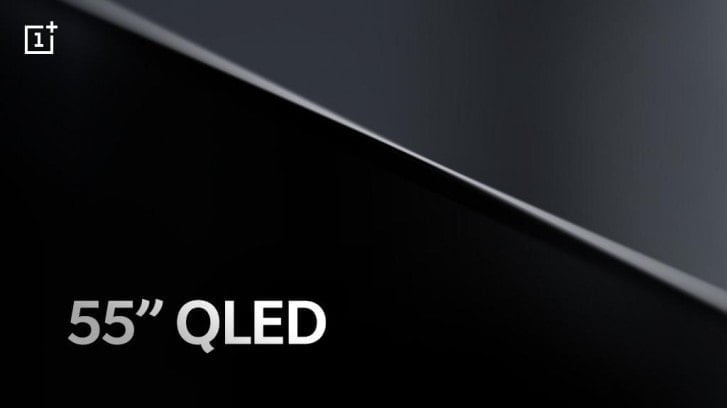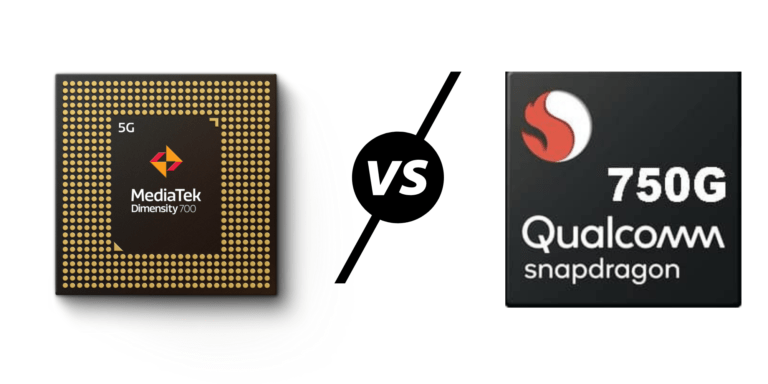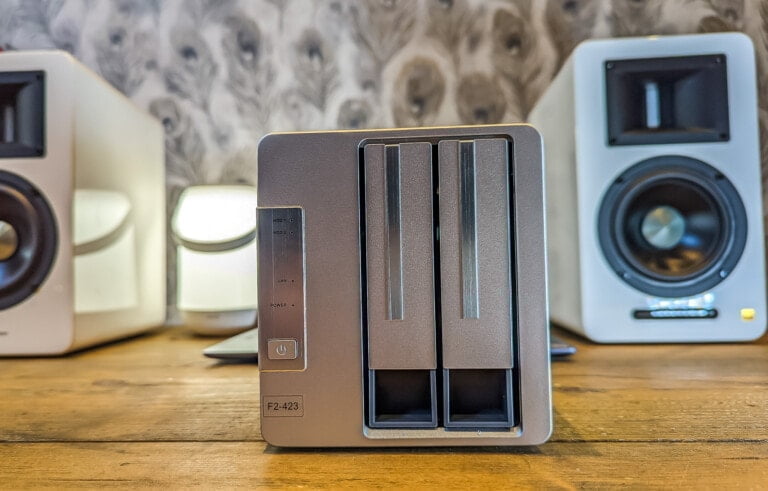Any links to online stores should be assumed to be affiliates. The company or PR agency provides all or most review samples. They have no control over my content, and I provide my honest opinion.
The Infinix ZERO 40 5G enters a crowded market with a bold claim: to be a “cinematic-level vlogging powerhouse”. While that statement might seem like marketing hyperbole, the phone does offer a compelling set of features aimed at video creators, all while maintaining a budget-friendly price point.
Infinix Zero 40 5G vs Infinix Zero 30 5G Specifications Comparison
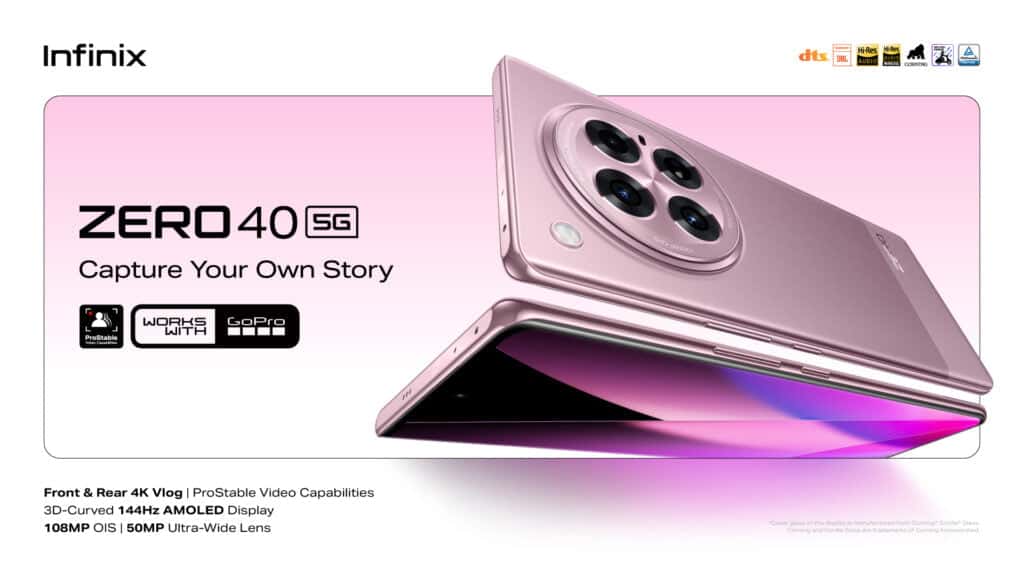
| Feature | Infinix Zero 40 5G | Infinix Zero 30 5G |
| Chipset | MediaTek Dimensity 8200 Ultimate | MediaTek Dimensity 8020 |
| CPU | Octa-core (1x Cortex-A78 @ 3.1GHz, 3x Cortex-A78 @ 2.6GHz, 4x Cortex-A55 @ 2.0GHz) | Octa-core (4x Cortex-A78 & 4x Cortex-A55) |
| GPU | Arm Mali-G610 MC6 | Mali-G77 MP9 |
| RAM | 12GB LPDDR5X | 8GB/12GB LPDDR4X |
| Storage | 256GB/512GB UFS 3.1 | 128GB/256GB UFS 3.1 |
| Display | 6.78″ FHD+ LTPS AMOLED, 144Hz | 6.7″ FHD+ Curved AMOLED, 144Hz |
| Screen Protection | Corning Gorilla Glass 5 | Corning Gorilla Glass 5 |
| Main Rear Camera | 108MP (OIS, 6P Lens, PDAF) + 50MP | 108MP (OIS) + 13MP Ultra-Wide + AI Lens |
| Front Camera | 50MP, 1/2.76″ sensor, 5P Lens, PDAF | 50MP, 4K Video Recording @ 60fps |
| Battery | 5000mAh, 45W Wired Charging, 20W Wireless Charging | 5000mAh, 68W Fast Charging |
| Operating System | XOS 14.5, Android 14 | XOS 13, Android 13 |
| Build | Flexible AMOLED, IP54 | Curved AMOLED, IP53 |
| Dimensions | 164.31 x 74.47 x 7.9 mm, 195g | 164.51 x 75.03 x 7.9 mm, 185g |
| Connectivity | Wi-Fi 6E, Bluetooth, NFC, Dual Nano-SIM, 5G | Wi-Fi 6, Bluetooth, NFC, Dual Nano-SIM, 5G |
| Sensors | In-Display Fingerprint, G-Sensor, E-Compass, Gyroscope, Proximity Sensor | In-Display Fingerprint, G-Sensor, E-Compass, Gyroscope, Proximity Sensor |
| Audio | DTS, Hi-Res Audio & Wireless, Widevine L1+ | Stereo Speakers, DTS, Hi-Res Audio |
| Special Features | Infrared Blaster, Z-Axis Linear Motor, Dual Flash | Quad-LED Flash, Dual Speakers |
| Water & Dust Resistance | IP54 | IP53 |
| Price | TBA | Starting at $360 |
Key Differences:
- Chipset: The Zero 40 comes with a slightly more powerful MediaTek Dimensity 8200 Ultimate compared to the Dimensity 8020 in the Zero 30.
- Camera Setup: While both have a 108MP primary camera with OIS, the Zero 30 adds a 13MP ultra-wide sensor. The front cameras are similar but with small variations in features.
- Charging: The Zero 30 supports faster wired charging at 68W, while the Zero 40 balances wired and wireless charging (45W wired and 20W wireless).
- Build and Display: Both phones use AMOLED displays with 144Hz refresh rates, but the Zero 40 offers IP54 resistance and flexible AMOLED material, while the Zero 30 has a curved AMOLED display with IP53 rating.
Infinix Zero 40 4G
It is also worth noting that there is also an Infinix Zero 40 4G model launching at a lower price point. This appears to be identical to the 5G model but it uses the MediaTek Helio G100 chipset which is largely the same as the Helio G99.
The Mediatek G100 is quite a bit lower specced than the Dimensity 8200 on the 5G phone. It has an octa-core CPU with two 2.2 GHz Cortex-A76 cores and six 2.0 GHz Cortex-A55 units. It uses LPDDR4X RAM and UFS 2.2 storage, while the max display resolution is 2,520 x 1,080 pixels.
Design and Display
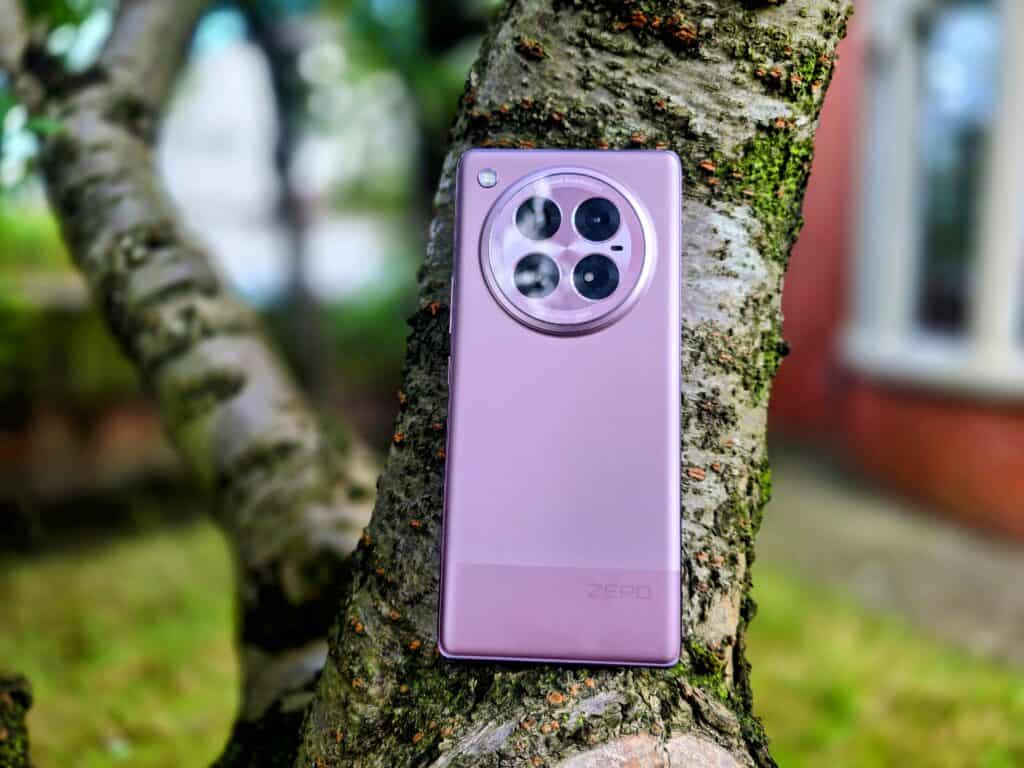
The Infinix ZERO 40 showcases a refined design in comparison to the Zero 30.
The main difference is the rear design, which has been ditched by the large rectangular camera section with a circular design. The overall appearance is not dissimilar to the Honor Magic6 Pro, and the appearance and build quality make it feel like a much more expensive phone than it is.
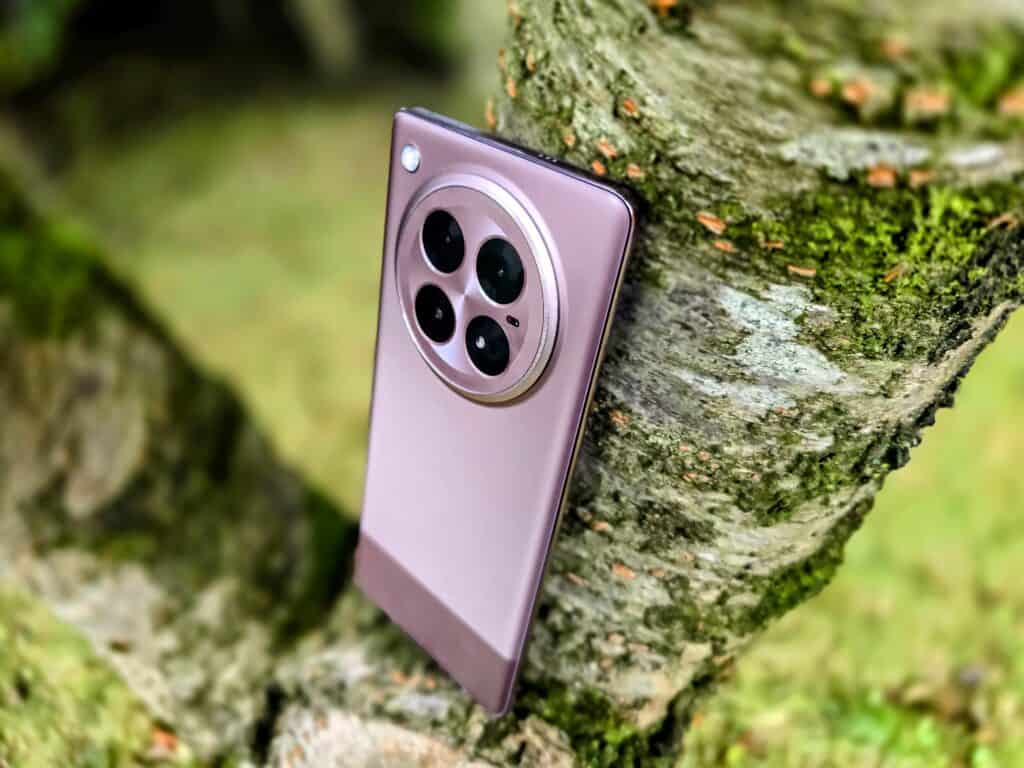
The phone features a 6.78-inch LTPS AMOLED display with a Full HD+ resolution and a smooth 144Hz refresh rate. This high refresh rate ensures fluid scrolling and responsive touch interactions, which is particularly noticeable when navigating the UI or playing games.
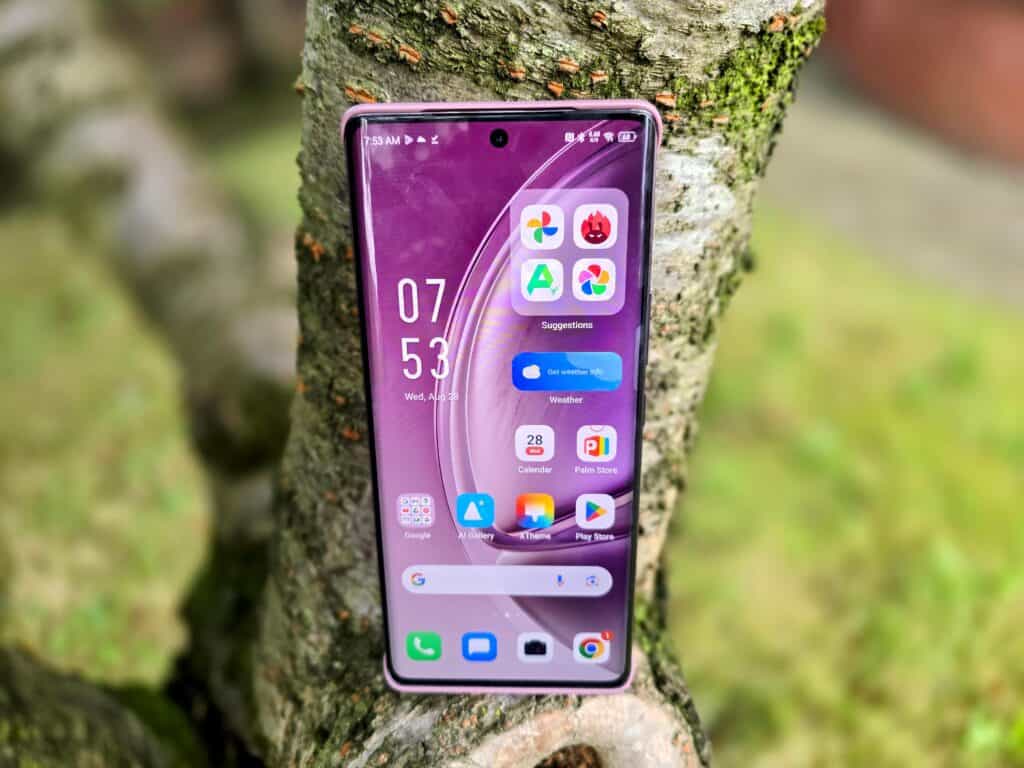
The display is protected by Corning Gorilla Glass 5, offering a good balance of scratch and drop resistance. With a peak brightness of 1300 nits, the screen remains visible even in bright outdoor conditions. The 10-bit colour depth and 100% DCI-P3 colour gamut coverage contribute to vivid and accurate colour reproduction, making the ZERO 40 suitable for multimedia consumption and content creation.
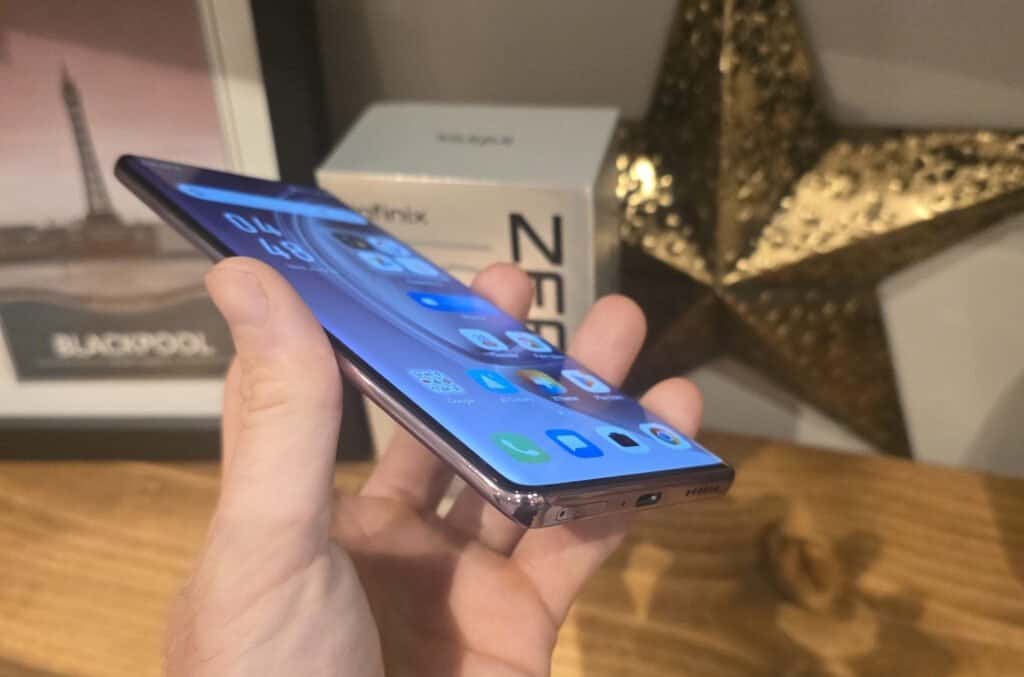
The display is a 3D curved screen with a 55-degree golden curvature. This enhances the visual appeal and improves the ergonomics, making the device more comfortable to hold. The curved edges also contribute to the illusion of a bezel-less display, providing an immersive viewing experience. However, many people are not keen on curved edges as it can impact usability. The curve on this is not too aggressive, so I haven’t personally had any issues with it.
At 7.9mm thick and weighing 195g, the ZERO 40 strikes a good balance between a slim profile and a substantial feel in hand. The device’s build quality is solid, with a glass front and back sandwiching a metal frame. The IP54 rating provides some protection against dust and water splashes, which is an improvement over the IP53 rating of its predecessor.
Finally, the ZERO 40 is available in three colour options: Violet Garden, Moving Titanium, and Rock Black.
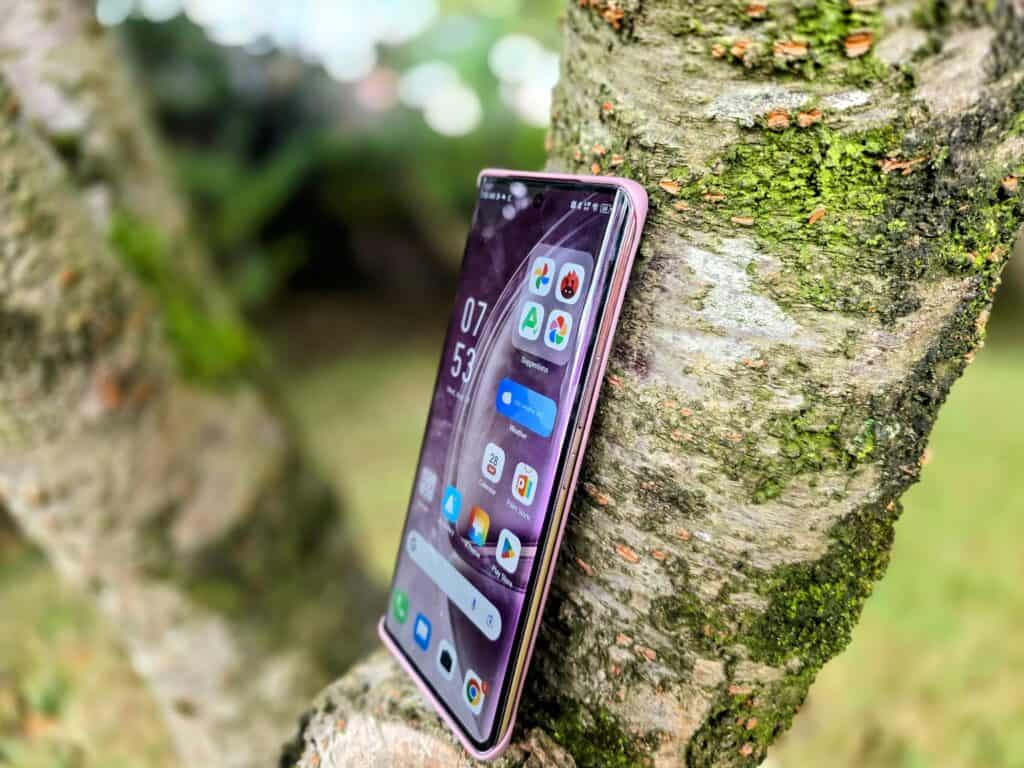
Camera
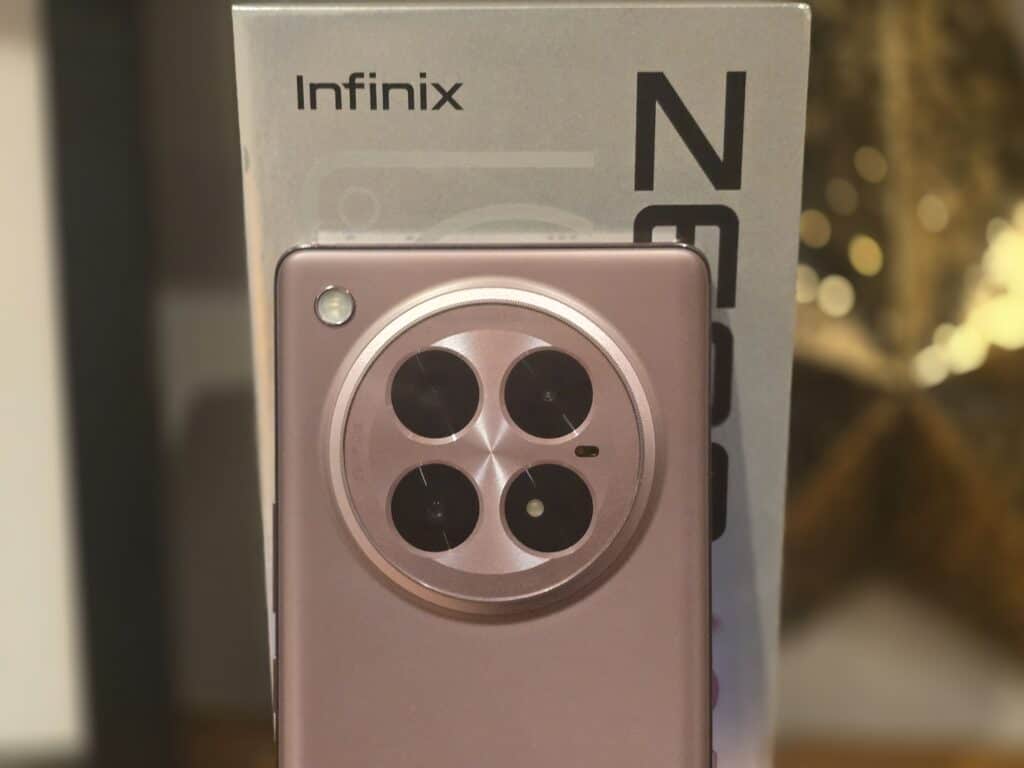
The main camera on the ZERO 40 is the same 108 MP 1/1.67” sensor that was on the ZERO 30, this is likely the Samsung ISOCELL HM6 which is also used on phones like the Xiaomi Redmi Note 13.
The sensor benefits from both optical image stabilisation (OIS) and electrical image stabilisation (EIS).
The large sensor size and OIS allow you to take consistently good photos. The large sensor allows the camera to capture more light, resulting in detailed and well-exposed images in various lighting conditions. The OIS helps to reduce blur from hand shake, particularly useful in low-light situations or when capturing video.
The main upgrade is the new 50MP ultra-wide camera with its 120-degree field of view, which significantly improves over the 13MP ultra-wide found in the ZERO 30. This higher resolution sensor should provide more detailed wide-angle shots, making it useful for landscapes, group photos, or capturing expansive interiors.
The device supports 4K video recording at 60 frames per second (fps) on both the rear and front cameras – a feature typically reserved for more expensive flagship devices. This high-resolution, high-frame-rate video recording allows for smooth, detailed footage that can be slowed down in post-processing without losing quality.
The front-facing camera is equally impressive, featuring a 50MP sensor with phase detection autofocus (PDAF) and a large 1/2.76-inch sensor size. This setup should deliver sharp, detailed selfies and is capable of 4K 60fps video recording, making it an excellent choice for vloggers or those who frequently use video calls.
Infinix has also implemented several software features to enhance the camera experience:
- ProStable Video: This feature combines OIS and electronic image stabilisation (EIS) to provide smooth, stable video footage, even when shooting handheld or in motion.
- Dual Video: This mode allows users to record video simultaneously from both the front and rear cameras, providing a more comprehensive perspective.
- AI Vlog: This feature uses AI to automatically detect highlights and create vlogs from your footage, simplifying the editing process for content creators.
- Super Night Mode: This mode uses AI algorithms to enhance low-light photography, bringing out details in shadows while managing highlights for balanced night-time shots.
- RAW HDR: This advanced mode captures and processes RAW image data to produce high dynamic range photos with improved colour accuracy and detail retention.
- Zoom Flashlight: This feature allows for adjustable flash intensity, providing more control over lighting in low-light situations.
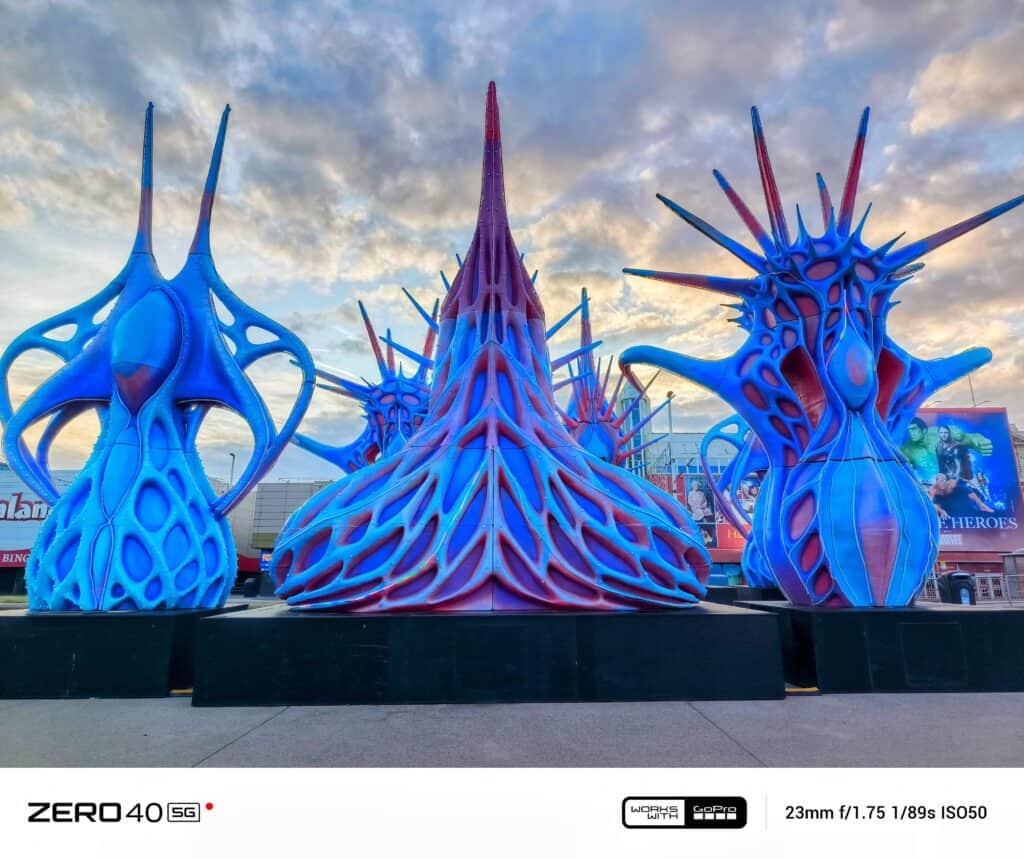
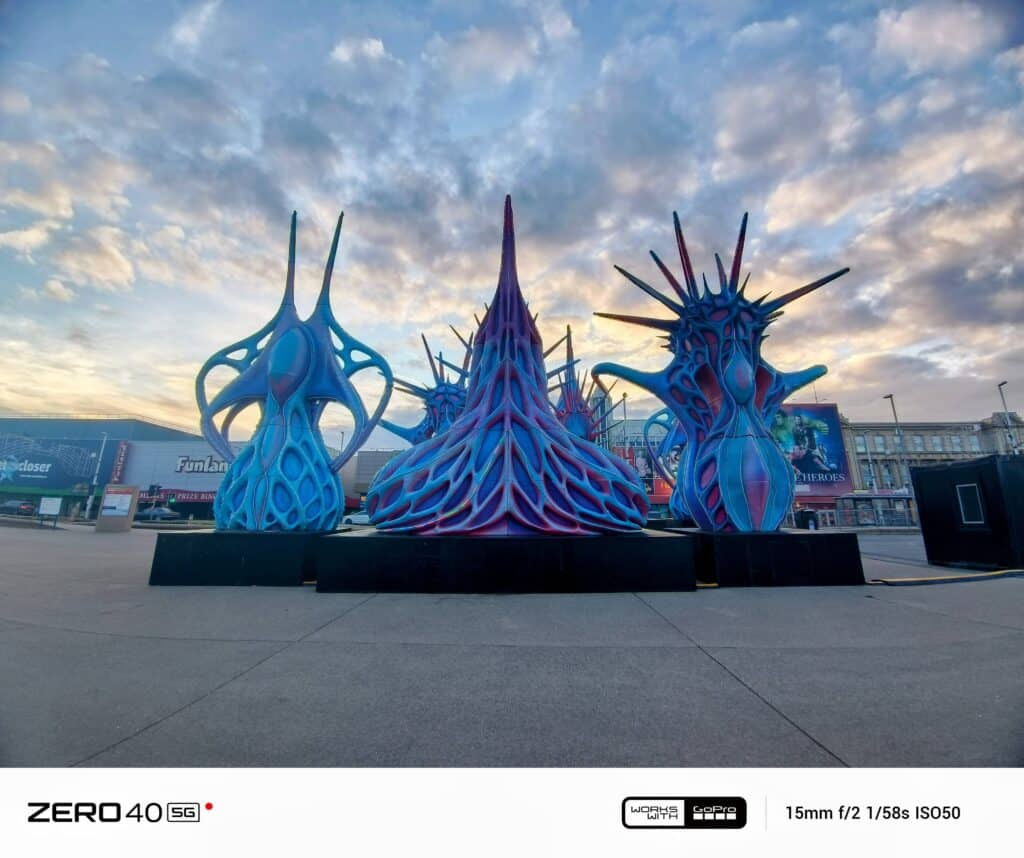
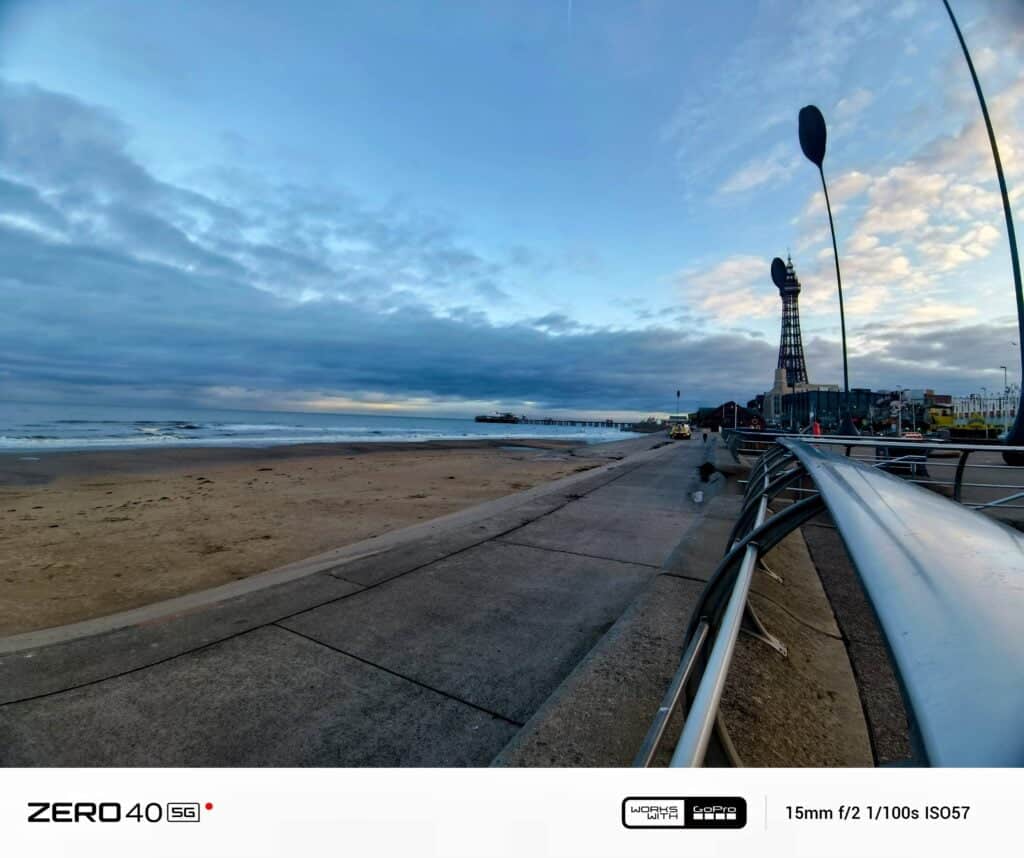
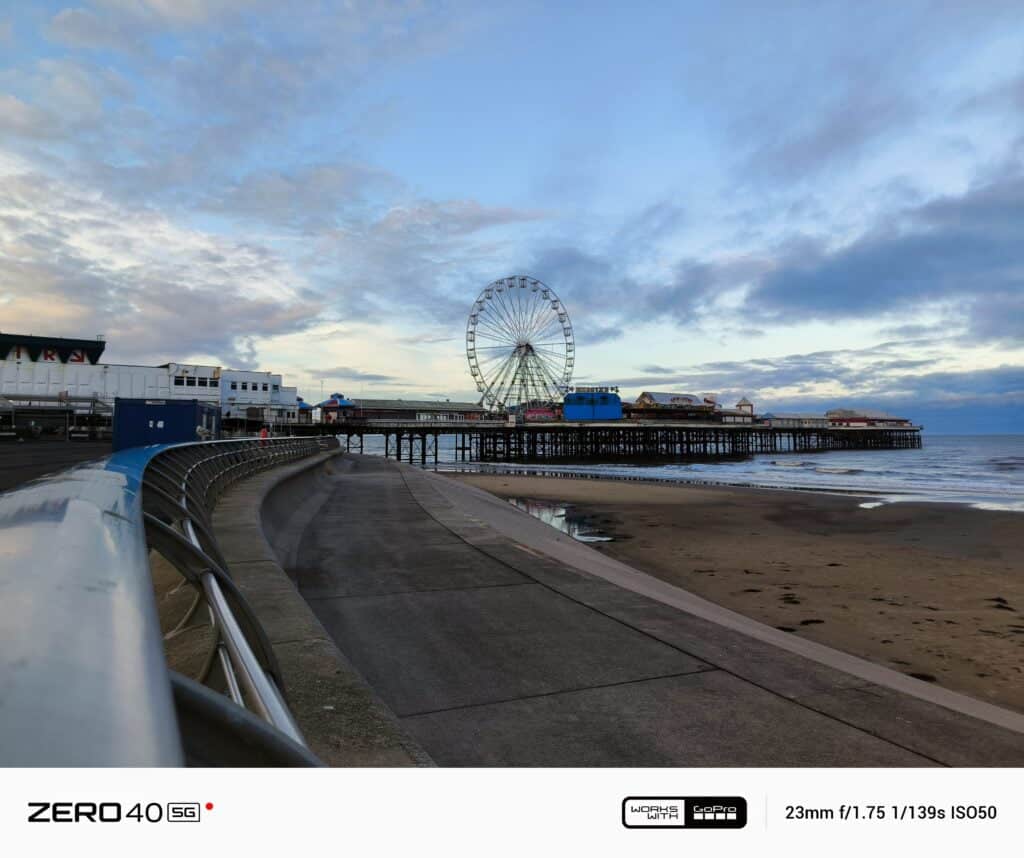
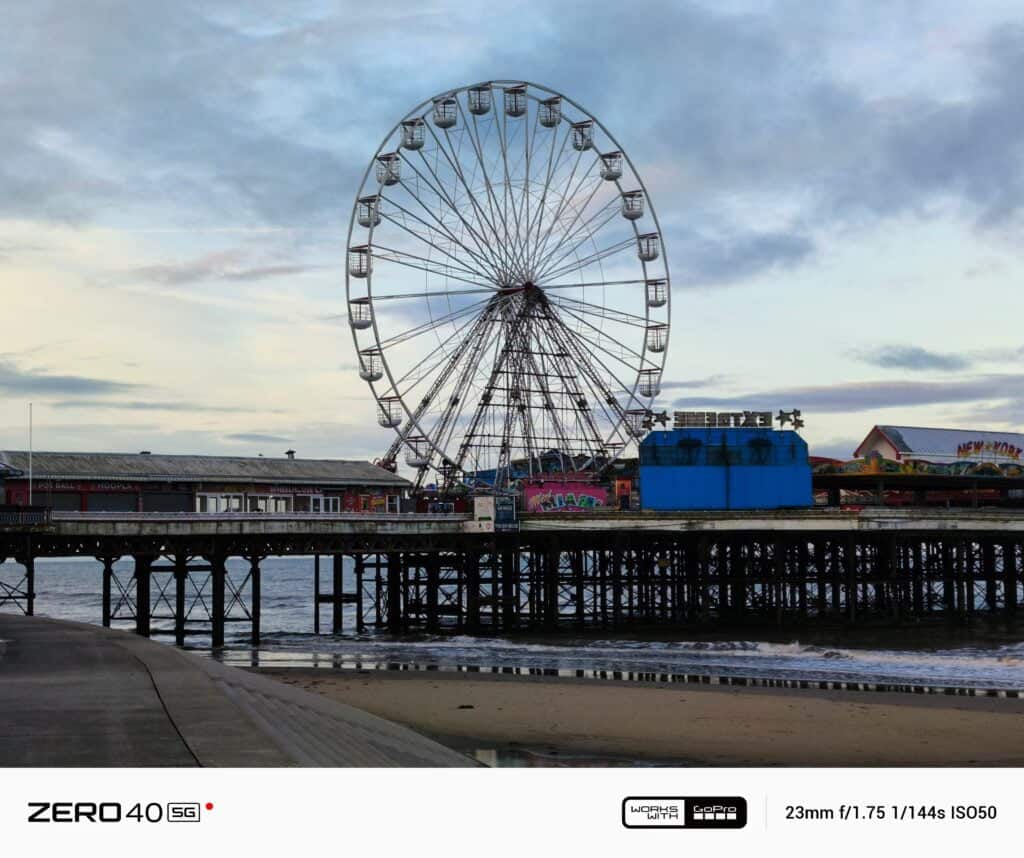
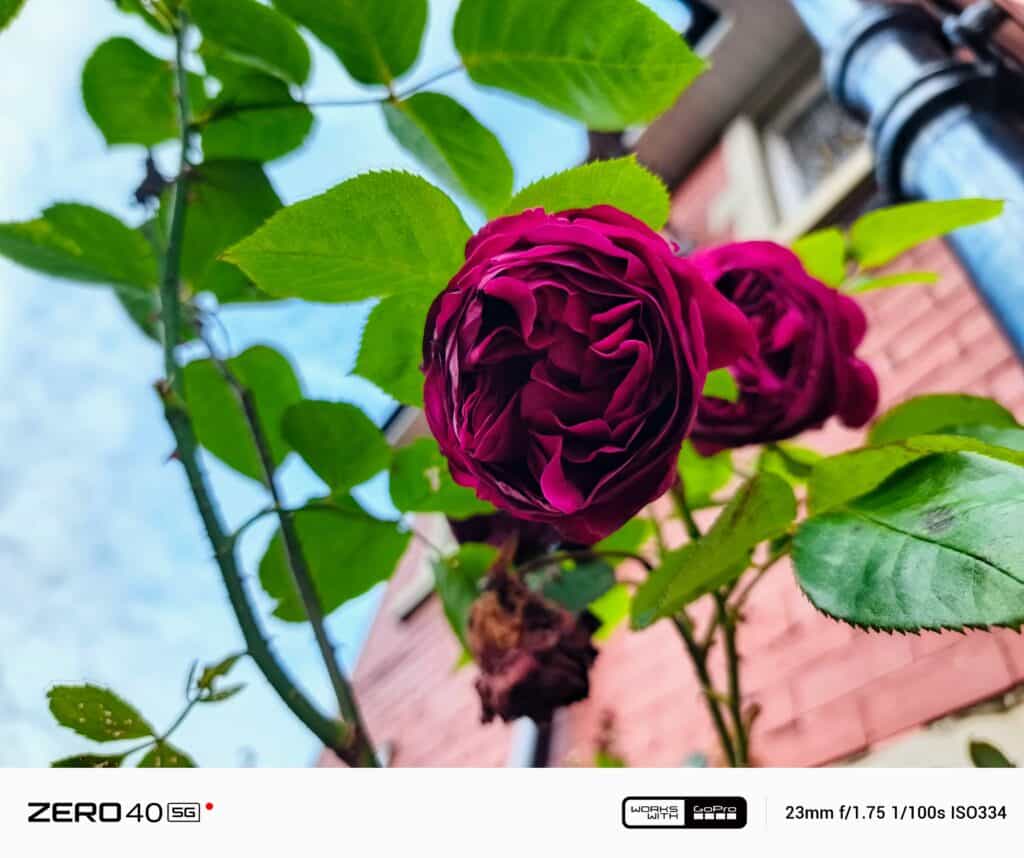
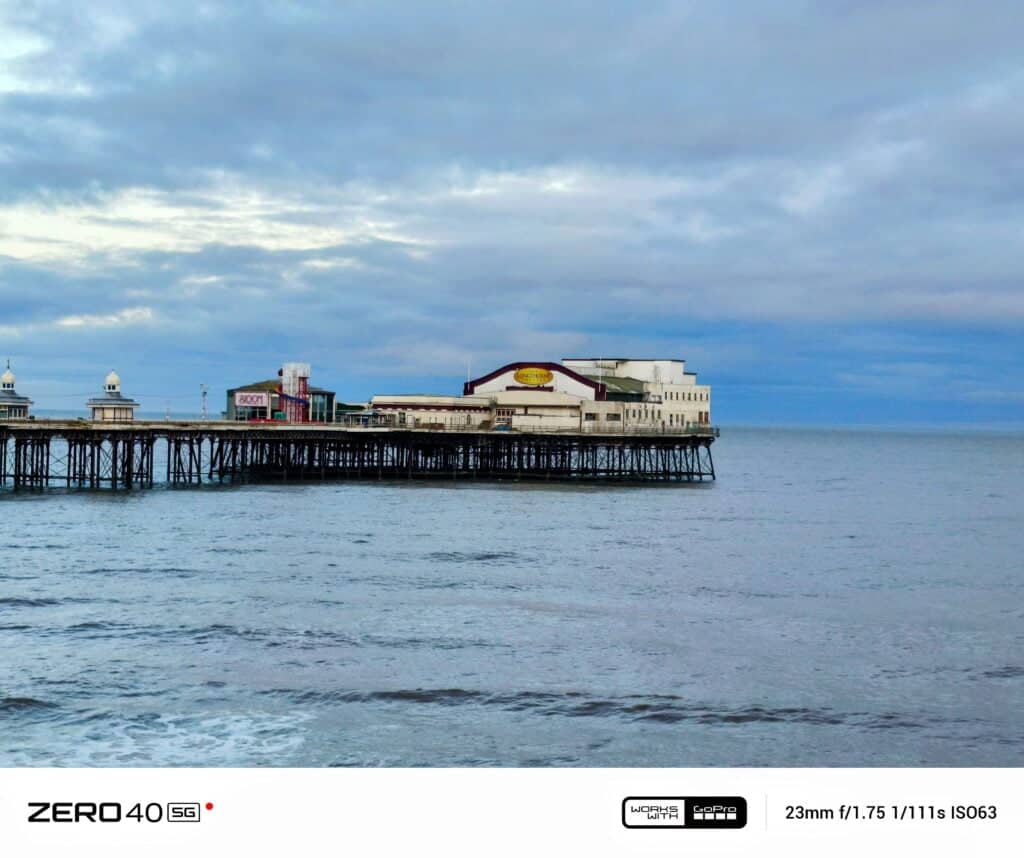
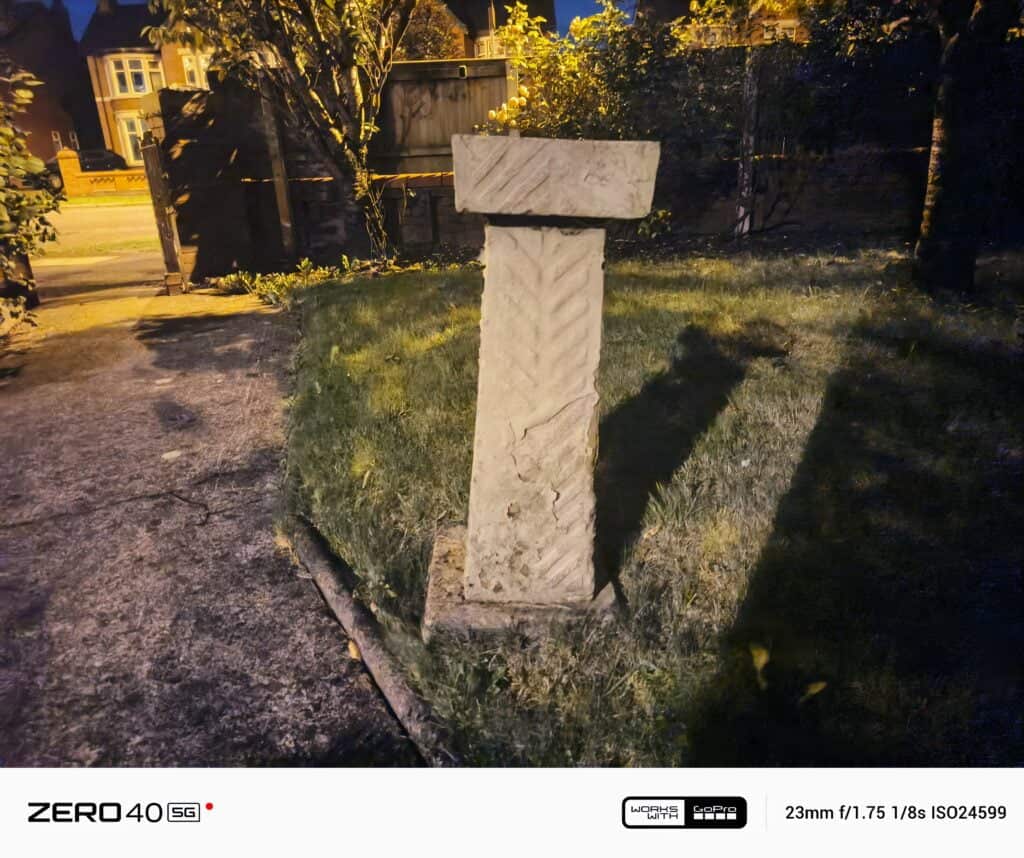

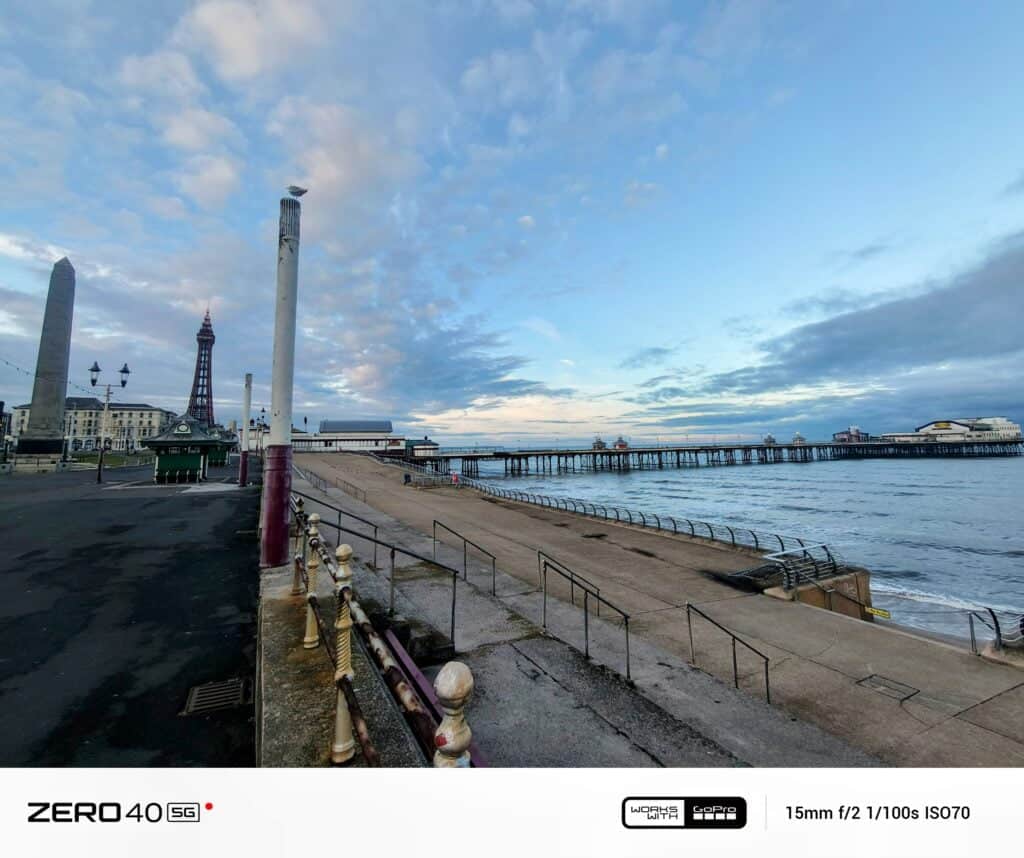
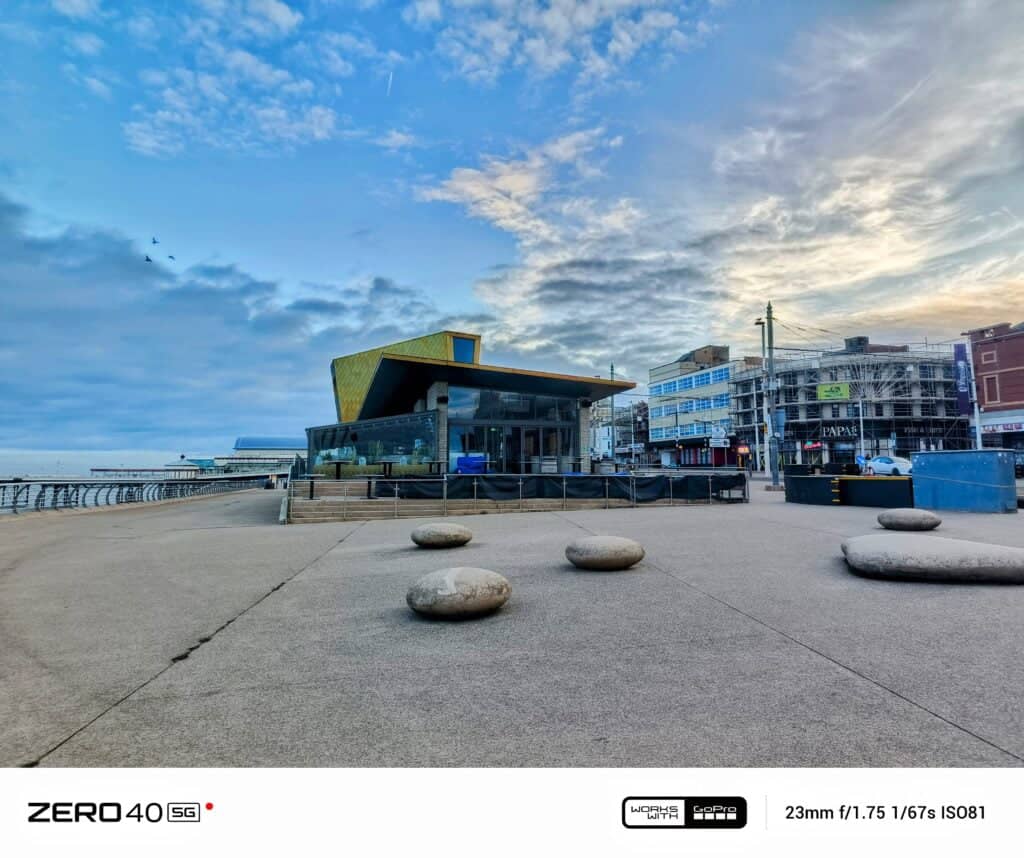
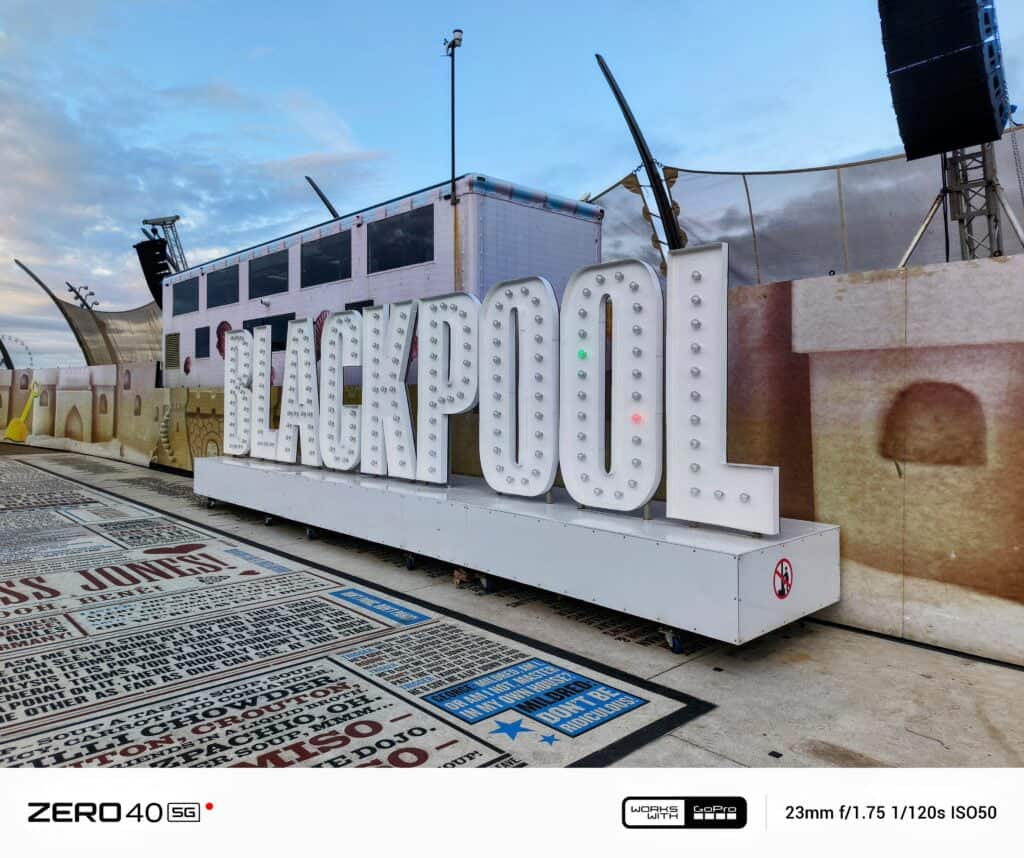
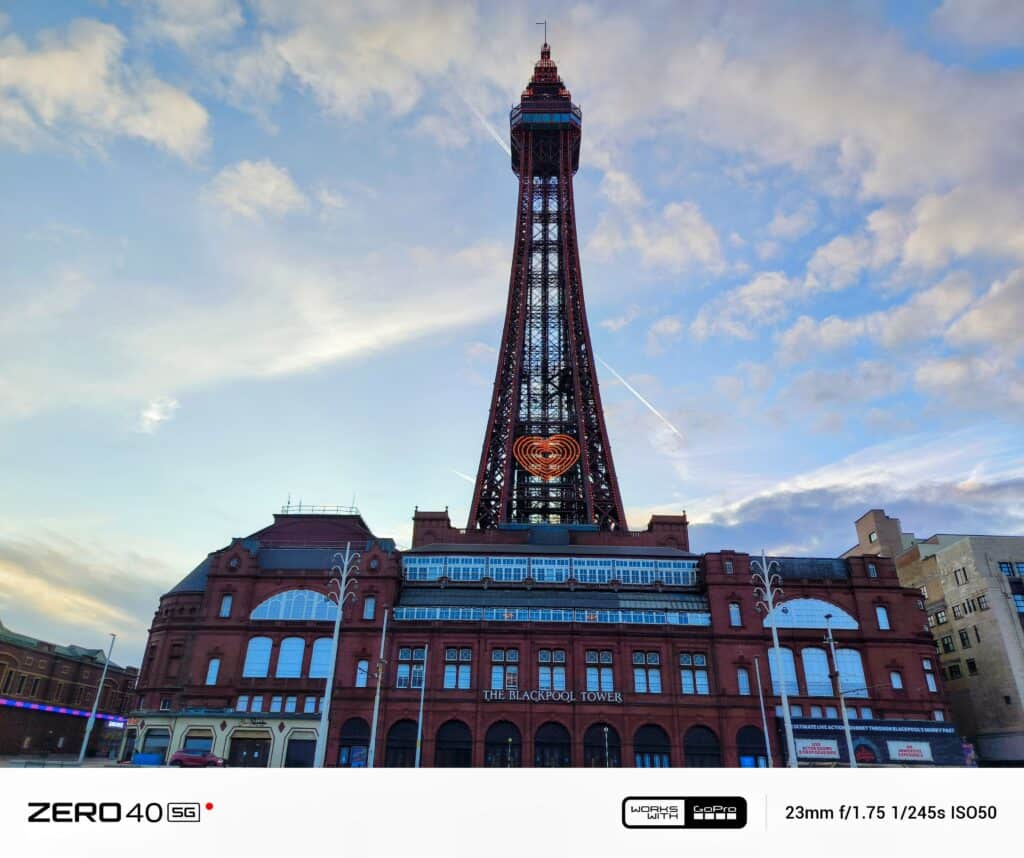
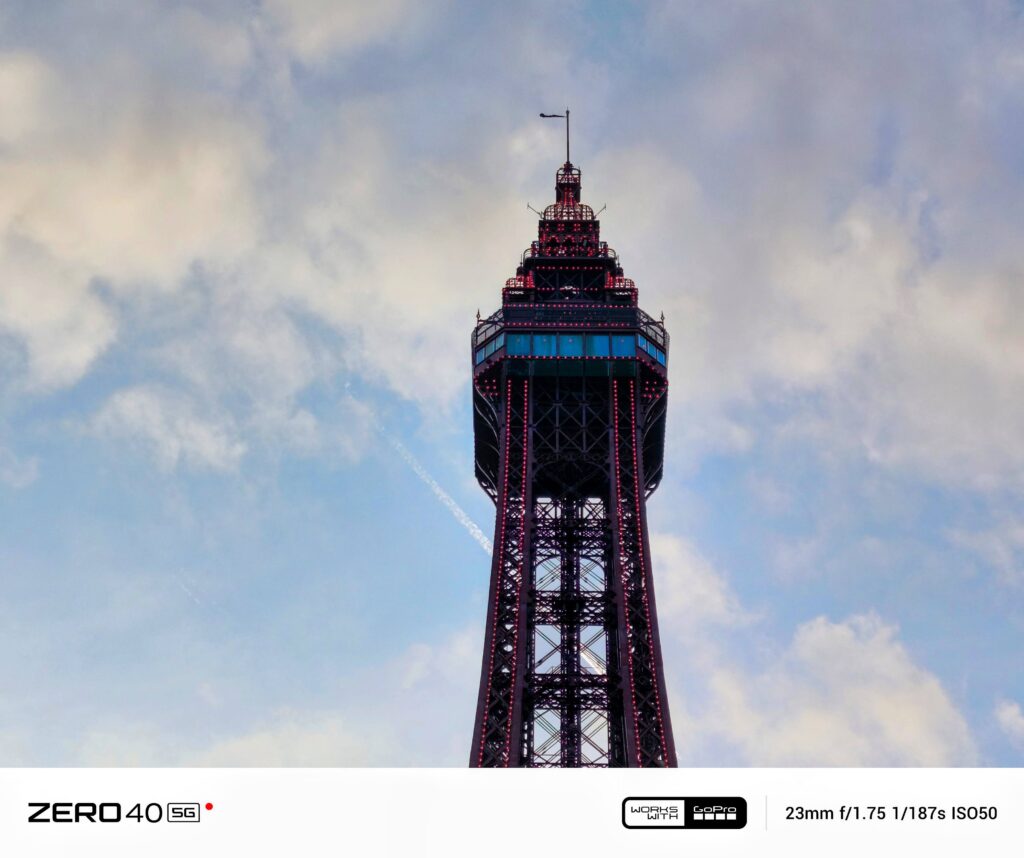
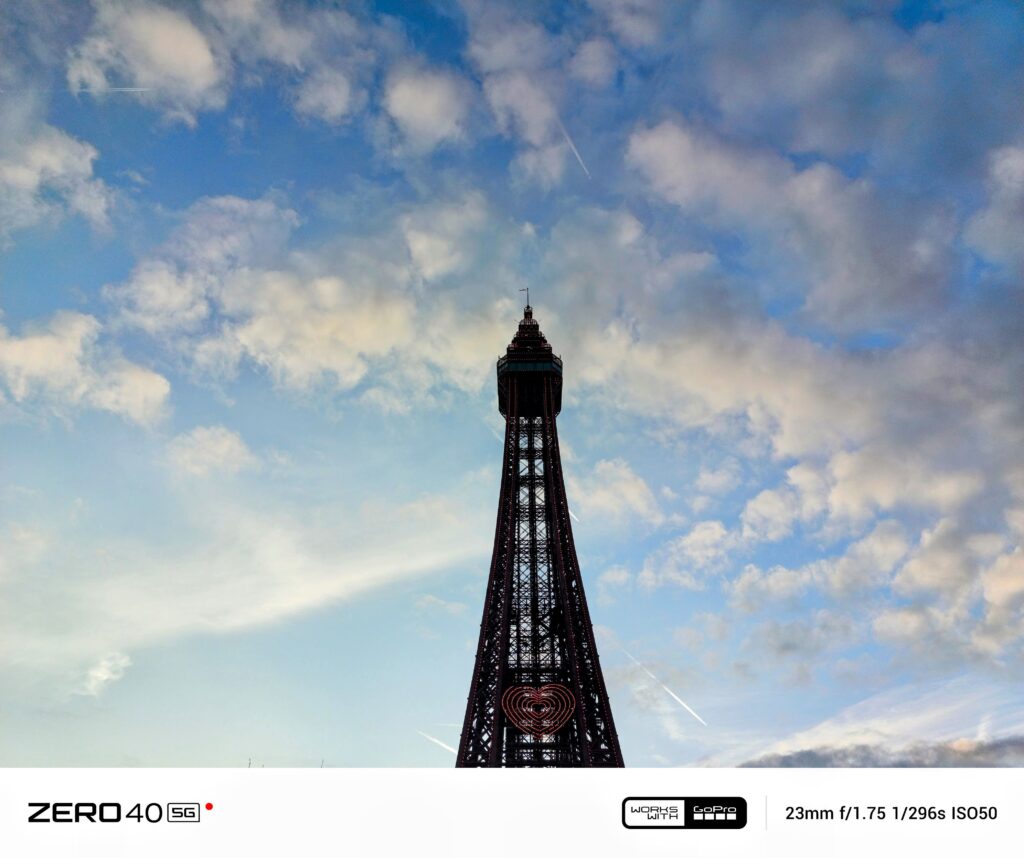



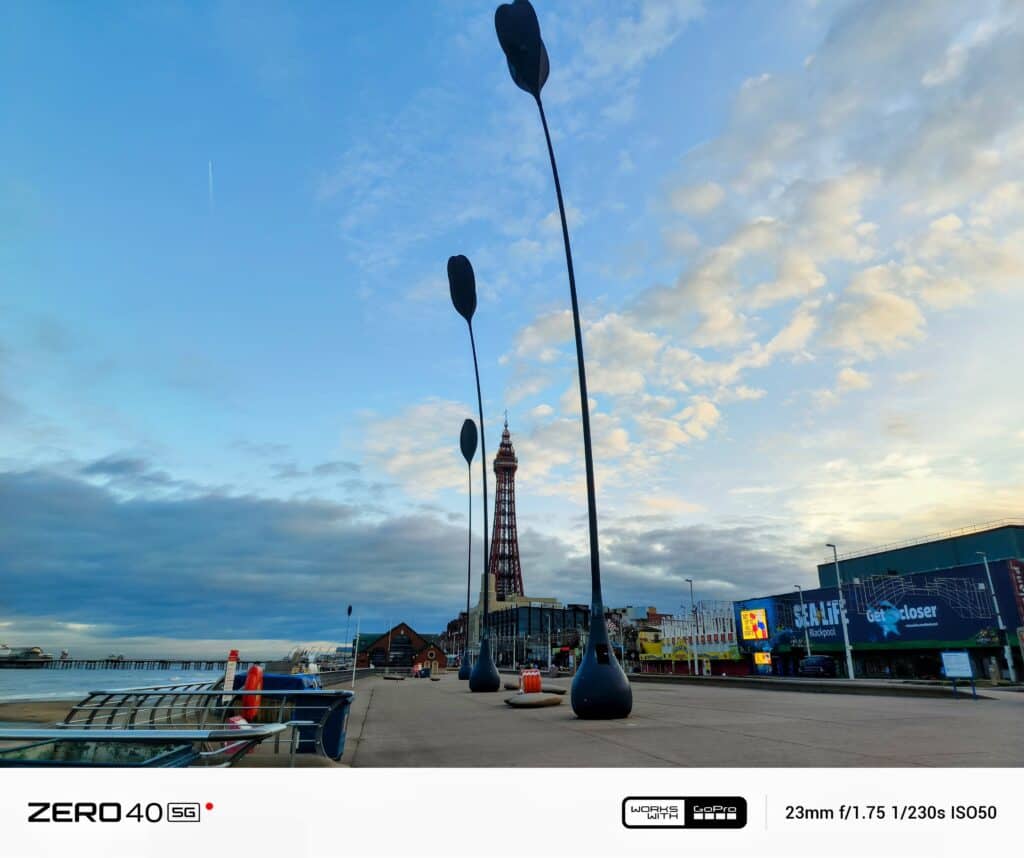
Performance and Benchmarks
At the heart of the Infinix ZERO 40 is the MediaTek Dimensity 8200 Ultimate chipset. This is a step up from the Dimensity 8020 found in its predecessor and promises improved performance across various tasks. It is also the same chipset that was used on the Infinix GT 20 Pro which I reviewed back in May.
The Dimensity 8200 Ultimate is built on a 4nm process, which should contribute to better power efficiency. It features an octa-core CPU configuration with one Cortex-A78 core clocked at 3.1GHz, three Cortex-A78 cores at 2.6GHz, and four Cortex-A55 cores at 2.0GHz. This setup provides a good balance between high-performance tasks and power efficiency for less demanding operations.
The GPU is an Arm Mali-G610 MC6, which should handle most mobile games without issue, though it may struggle with the most demanding titles at the highest settings.
The ZERO 40 comes with 12GB of LPDDR5X RAM, which is faster than the LPDDR4X found in the ZERO 30. This should translate to smoother multitasking and faster app launches. The device also features up to 512GB of UFS 3.1 storage, providing ample space for apps, media, and files with quick read and write speeds.
As for benchmarks, the performance is largely the same as the Infinix GT 20 Pro and Xiaomi 13T. The overall benchmarks are similar to what was achieved with the original Google Tensor found on the Pixel 6 Pro.
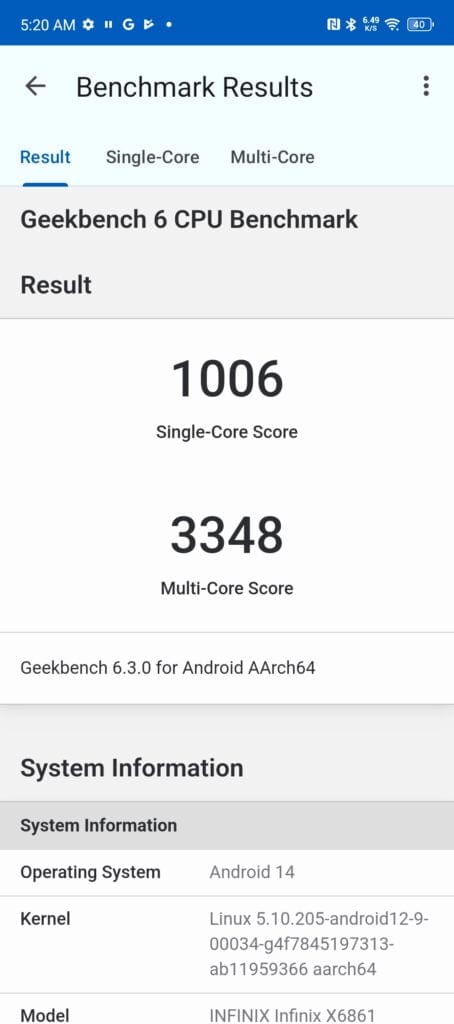
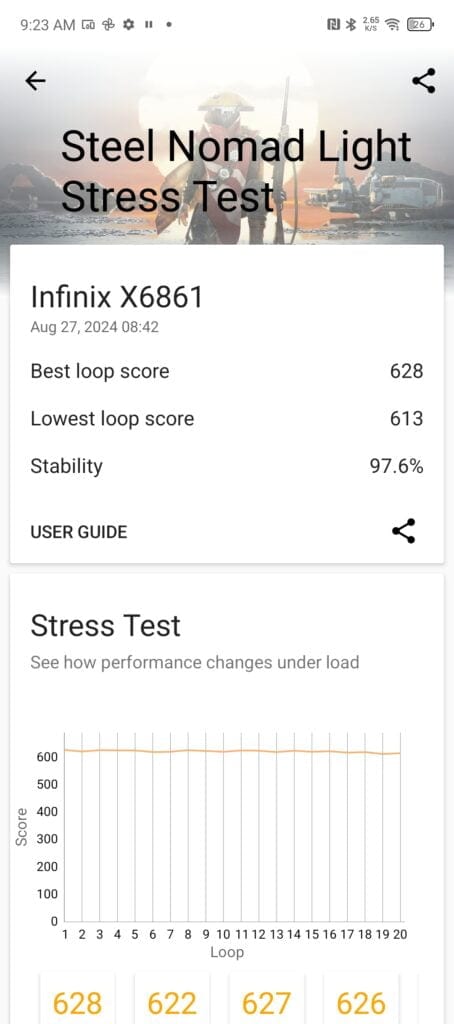
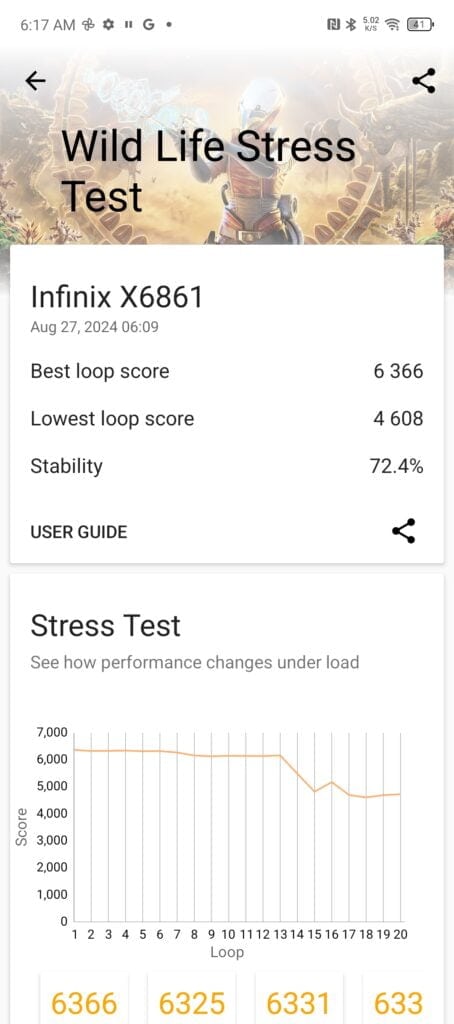
- Antutu V10
- Infinix ZERO 40 5G: 95460
- Infinix GT 20 Pro: 923633
- Xiaomi 13T: 896827
- Geekbench 6
- Infinix ZERO 40 5G: 1006 / 3348
- Infinix GT 20 Pro: 1090 / 3578
- Xiaomi 13T: 1119 / 3733
- 3DMark Wildlife Stress Test & Thermal Throttling (High Score / Low Score / Stability)
- Infinix ZERO 40 5G: 6366 / 4608/ 72.4%
- Infinix GT 20 Pro: 6316 / 6285 / 99.5%
- Xiaomi 13T: 6485 / 5879 / 90.7%
The ZERO 40 also supports 5G connectivity, Wi-Fi 6E, and Bluetooth 5.3, ensuring fast and stable connections across various networks.
Battery Life
The Infinix ZERO 40 is equipped with a 5000mAh battery, which has become the standard capacity for most Android smartphones in recent years. This should provide enough power for a full day of moderate to heavy use for most users.
One of the notable improvements over its predecessor is the addition of wireless charging. The ZERO 40 supports 20W wireless charging, which, while not the fastest available, is a convenient feature that’s often absent from devices in this price range. One surprising feature which does not appear to be advertised is that the included case has a MagSafe ring built into it, making the phone compatible with MagSafe and QI2 chargers.
For wired charging, the device supports 45W fast charging, which Infinix claims can charge the battery to 60% in just 25 minutes.
Infinix has implemented several features to optimise battery life and charging:
- Bypass Charging 2.0: This feature allows the phone to be powered directly from the charger when plugged in, bypassing the battery to reduce heat generation and preserve battery health during extended gaming or video watching sessions.
- Extreme Temperature Charging: The ZERO 40 can be charged even in extreme cold conditions, down to -20°C, which could be useful in certain climates or situations.
- AI Power Management: The device uses AI algorithms to optimise power consumption based on usage patterns, potentially extending battery life.
- Long-lasting Battery: Infinix claims the battery can maintain over 80% of its original capacity after 1600 charge cycles, which should translate to about four years of use for most users.
Android 14 with XOS 14.5
The Infinix ZERO 40 runs on Android 14, overlaid with Infinix’s custom XOS 14.5 skin. This combination brings the latest features from Android along with Infinix’s own customisations and additions.
As always, with these affordable brands, there is a moderate amount of bloatware, but nowhere near as bad as some options. It may be because I have used quite a lot of the Infinix phones now, but I find the XOS UI reasonably good, there are no glitches and the UI in general seems quite refined.
XOS 14.5 introduces several new features and improvements:
- AI Assistant: Infinix has integrated Google’s Gemini AI model, offering advanced AI capabilities directly on the device. This could potentially enhance various aspects of the user experience, from text prediction to image recognition.
- AI Eraser: This feature allows users to remove unwanted objects or people from photos easily, similar to features found in some flagship devices.
- Smart Cutout: Users can long-press on an image to quickly cut out and save highlighted parts, which can be useful for creating custom stickers or sharing specific elements of an image.
- AI Wallpaper: This feature generates personalised wallpapers based on text descriptions or uploaded images, adding a unique touch to device customisation.
- Always-On Display (AOD): The ZERO 40 supports AOD, allowing users to view important information like time, date, and notifications without waking the device.
- Game Mode: This mode optimises system resources for gaming, potentially improving performance and reducing distractions during gameplay.
- Privacy and Security Features: XOS 14.5 includes various privacy and security enhancements, such as app permission management and a privacy dashboard.
Infinix has committed to providing three years of Android version updates and three years of security patches for the ZERO 40. This commitment to long-term software support is commendable and should help extend the usable life of the device.
It is also worth noting that I was able to add my bank card to Google Wallet, which is not always possible with some of these affordable phones. I have not tested if it works yet, though.
Price and Alternative Options
As of the time of writing, Infinix has not officially announced the pricing for the ZERO 40, and as usual, it is unlikely that this phone will be released in the UK or EU.
However, based on the pricing of its predecessor and the specifications offered, we can speculate that it will be positioned in the upper mid-range segment, likely priced between £350 and £450.
At this price point, the ZERO 40 would face competition from several established brands:
- Google Pixel 7a: Offers a clean Android experience, excellent camera performance, and regular software updates. It is over a year old now but Google provide much longer support than other brands.
- Samsung Galaxy A54 5G: This is also over a year old, but it provides a well-rounded package with a good display, decent performance, and Samsung’s robust ecosystem.
- Redmi Note 13 Pro: This has a superior main camera, faster charging and a slightly larger battery, but the chipset is not as good and Redmi are quite bad for bloatware.
Verdict
The Infinix ZERO 40 is a good upgrade from the ZERO 30. Its performance significantly improved thanks to the MediaTek Dimensity 8200 Ultimate chipset and a much better ultra-wide camera.
It is largely the same phone as the Infinix GT 20 Pro, but you have a 50MP ultra-wide camera that is completely lacking on the GT 20 Pro, and the design is less gaming-orientated and more premium, especially with the curved display.
The commitment to three years of Android updates and security patches is commendable, as it could potentially extend the device’s usable life.
Overall, the Infinix ZERO 40 appears to be a competitive offering in the upper mid-range segment. It brings several premium features to a more accessible price point, potentially offering good value for money. For consumers who prioritise camera capabilities, particularly video recording, and are open to trying a less mainstream brand, the ZERO 40 is an excellent option.
Infinix ZERO 40 5G Review
Summary
The Infinix ZERO 40 appears to be a competitive offering in the upper mid-range segment. It brings several premium features to a more accessible price point, potentially offering good value for money. For consumers who prioritise camera capabilities, particularly video recording, and are open to trying a less mainstream brand, the ZERO 40 is an excellent option.
Overall
80%-
Overall - 80%80%
I am James, a UK-based tech enthusiast and the Editor and Owner of Mighty Gadget, which I’ve proudly run since 2007. Passionate about all things technology, my expertise spans from computers and networking to mobile, wearables, and smart home devices.
As a fitness fanatic who loves running and cycling, I also have a keen interest in fitness-related technology, and I take every opportunity to cover this niche on my blog. My diverse interests allow me to bring a unique perspective to tech blogging, merging lifestyle, fitness, and the latest tech trends.
In my academic pursuits, I earned a BSc in Information Systems Design from UCLAN, before advancing my learning with a Master’s Degree in Computing. This advanced study also included Cisco CCNA accreditation, further demonstrating my commitment to understanding and staying ahead of the technology curve.
I’m proud to share that Vuelio has consistently ranked Mighty Gadget as one of the top technology blogs in the UK. With my dedication to technology and drive to share my insights, I aim to continue providing my readers with engaging and informative content.

